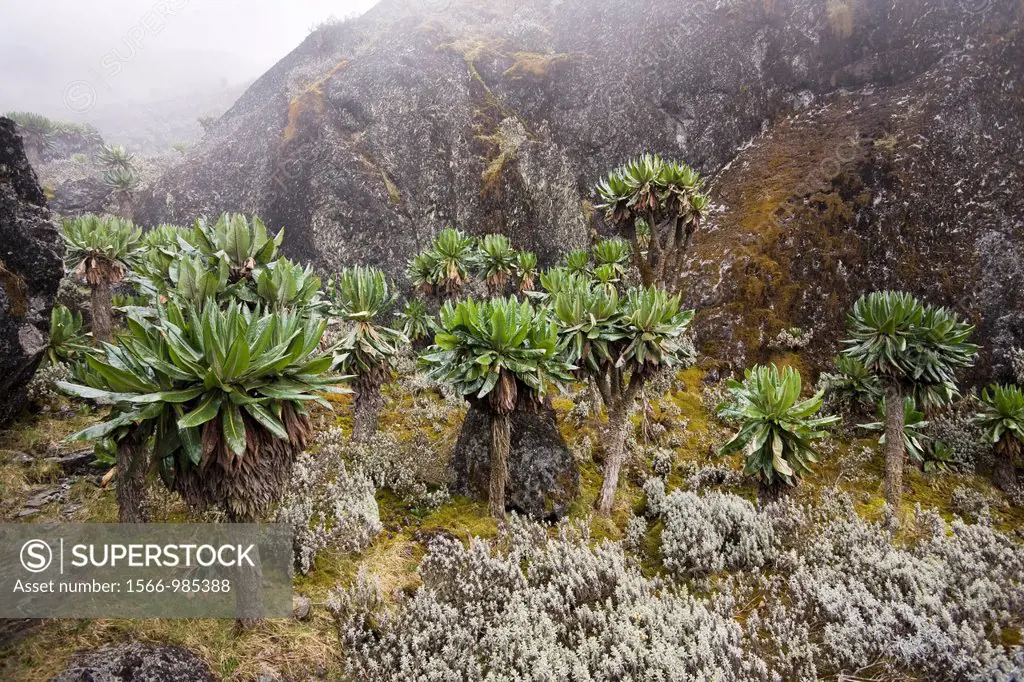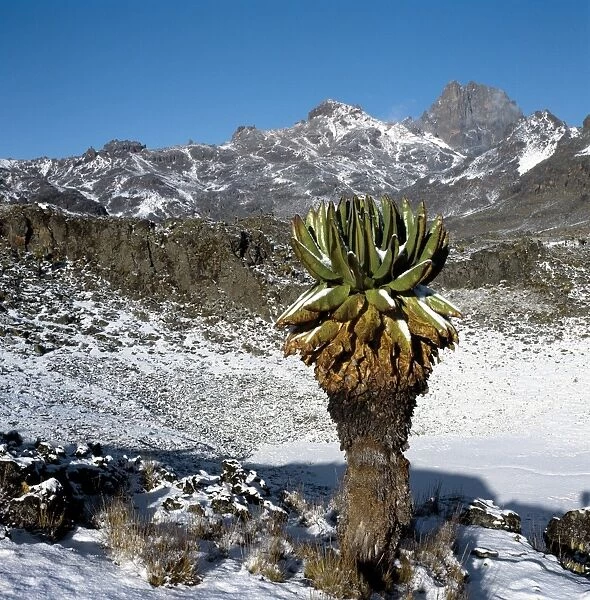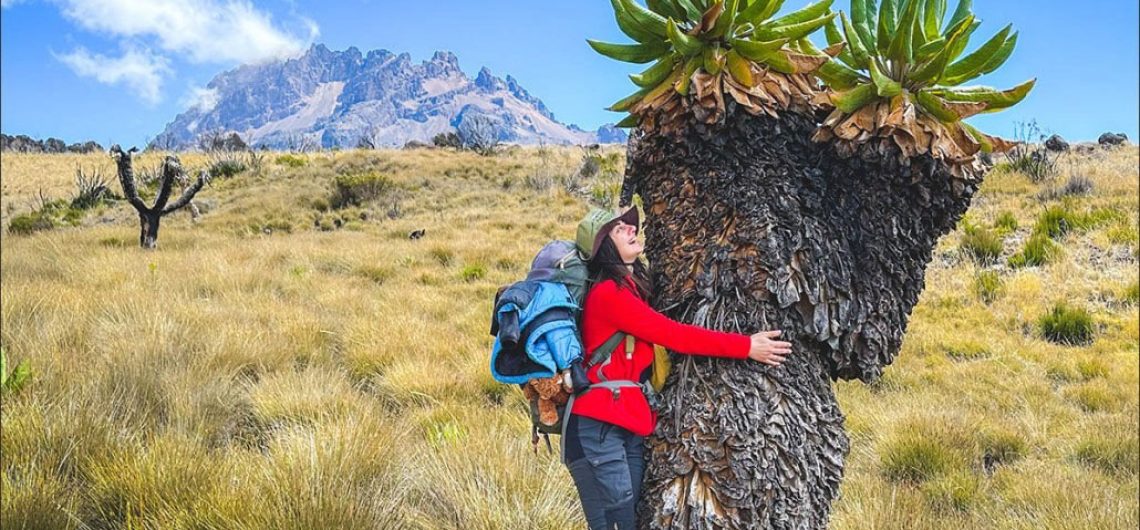Giant Groundsel: The World's Tallest Flowering Plant
Title: Giant Groundsel: The World's Tallest Flowering Plant
Introduction:
The giant groundsel (Dendrosenecio kilimanjari) is a towering plant that can grow up to 30 meters tall, making it the tallest flowering plant in the world. It is found only on Mount Kilimanjaro and a few other mountains in East Africa.
Giant groundsels are members of the sunflower family (Asteraceae). They have thick, woody stems that can support their great height. Their leaves are large and lobed, and they grow in a spiral pattern around the stem. The flowers are yellow and daisy-like, and they bloom in a cluster at the top of the plant.
Giant groundsels are adapted to the harsh conditions of their high-altitude environment. They have thick leaves that help to conserve water, and their roots can grow deep into the ground to reach moisture. They also have a waxy coating on their leaves that helps to protect them from the sun's rays.
Giant groundsels are an important part of the ecosystem on Mount Kilimanjaro. They provide food and shelter for a variety of animals, and their flowers attract pollinators. They also help to stabilize the soil and prevent erosion.
Main Content:
- History and Distribution
The giant groundsel is a relatively recent arrival on Mount Kilimanjaro. It is thought to have evolved from a common groundsel species about a million years ago. The plant's ancestors were able to survive and thrive in the harsh environment of Mount Kilimanjaro by evolving a number of adaptations, such as thick leaves, deep roots, and a waxy coating on their leaves.
The giant groundsel is now found only on Mount Kilimanjaro and a few other mountains in East Africa, including Mount Kenya, Mount Meru, and the Rwenzori Mountains. It is not found anywhere else in the world.
- Reproduction
Giant groundsels reproduce by seed. The seeds are dispersed by the wind, and they can travel long distances. The seeds germinate in the spring, and the young plants grow quickly. They reach maturity in about 10 years, and they can live for up to 100 years.
- Ecology
Giant groundsels are an important part of the ecosystem on Mount Kilimanjaro. They provide food and shelter for a variety of animals, including elephants, giraffes, and monkeys. Their flowers attract pollinators, such as bees and butterflies. They also help to stabilize the soil and prevent erosion.
- Threats
Giant groundsels are not currently facing any major threats. However, they are vulnerable to climate change. As the temperatures on Mount Kilimanjaro rise, the plant's habitat will shrink. This could lead to the decline or even extinction of the giant groundsel.
Conclusion:
The giant groundsel is a fascinating and unique plant. It is the tallest flowering plant in the world, and it plays an important role in the ecosystem on Mount Kilimanjaro. We must protect this amazing plant from the threats of climate change so that it can continue to thrive for many years to come.
Giant groundsel is a tall, invasive plant that can grow up to 10 feet tall. It is native to Europe and Asia, but it has been introduced to North America and other parts of the world. Giant groundsel can be a nuisance in gardens and other areas, as it can quickly spread and crowd out native plants. If you have giant groundsel on your property, you can visit Home Gardening for more information about how to identify and control it.
FAQ of giant groundsel
- What is a giant groundsel?
A giant groundsel is a flowering plant that is native to Mount Kilimanjaro in Tanzania. It is the largest groundsel in the world, with some individuals reaching heights of over 30 feet. Giant groundsels are evergreens and have large, lobed leaves that can measure up to 3 feet in length. They are also known for their large, yellow flowers that bloom in the spring.
- Why does the giant groundsel store water?
Giant groundsels store water in their stems and leaves in order to survive the harsh conditions of Mount Kilimanjaro. The mountain is located in a tropical rainforest, but the climate at higher altitudes is much colder and drier. The giant groundsel's water storage system allows it to survive even when temperatures drop below freezing and rainfall is scarce.
- How old is the giant groundsel?
Giant groundsels can live for centuries. Some individuals have been estimated to be over 1,000 years old. The oldest known giant groundsel is a specimen that is over 1,200 years old.
- What are the threats to the giant groundsel?
The giant groundsel is threatened by a number of factors, including climate change, deforestation, and overgrazing. Climate change is causing the mountain to become warmer and drier, which is making it more difficult for the giant groundsel to survive. Deforestation is also a major threat, as it removes the giant groundsel's natural habitat. Overgrazing by livestock can also damage the giant groundsel's roots and leaves.
- What can be done to protect the giant groundsel?
There are a number of things that can be done to protect the giant groundsel, including:
* Reducing greenhouse gas emissions to slow climate change.
* Protecting existing forests and planting new ones.
* Regulating grazing in areas where giant groundsels are found.
* Educating people about the importance of the giant groundsel and the threats it faces.
Image of giant groundsel
10 different images of giant groundsel that are free to use:
- Giant groundsel in flower. This image shows a giant groundsel in full bloom. The flower head is large and yellow, and it can reach up to 2 feet in diameter.

- Giant groundsel close up. This image shows a close-up of the flower head of a giant groundsel. The individual florets are small and white, and they are arranged in a spiral pattern.

- Giant groundsel in the forest. This image shows a giant groundsel growing in a forest. The plant is tall and slender, and it has large, lobed leaves.

- Giant groundsel in the sun. This image shows a giant groundsel growing in the sun. The plant is covered in small hairs, which give it a silvery-green appearance.

- Giant groundsel in the fog. This image shows a giant groundsel shrouded in fog. The plant's leaves are glistening with moisture, and the fog gives the scene a mysterious atmosphere.

- Giant groundsel in the snow. This image shows a giant groundsel covered in snow. The plant is still alive, but it is dormant for the winter.

- Giant groundsel with a climber. This image shows a giant groundsel with a climber growing on it. The climber is using the giant groundsel as a support, and it is flowering profusely.

- Giant groundsel with a butterfly. This image shows a giant groundsel with a butterfly resting on it. The butterfly is feeding on the nectar of the flower head.

- Giant groundsel with a bird. This image shows a giant groundsel with a bird sitting on it. The bird is perched on one of the leaves, and it is looking for insects to eat.

- Giant groundsel with a person. This image shows a giant groundsel with a person standing next to it. The person is dwarfed by the size of the plant, which shows how large giant groundsels can grow.

Post a Comment for "Giant Groundsel: The World's Tallest Flowering Plant"